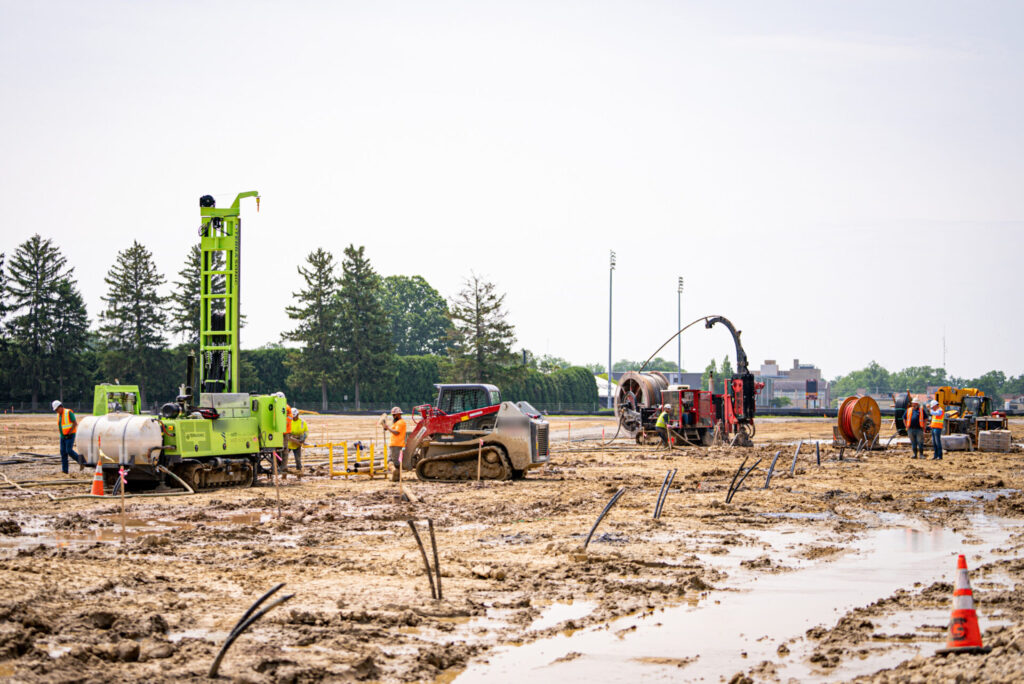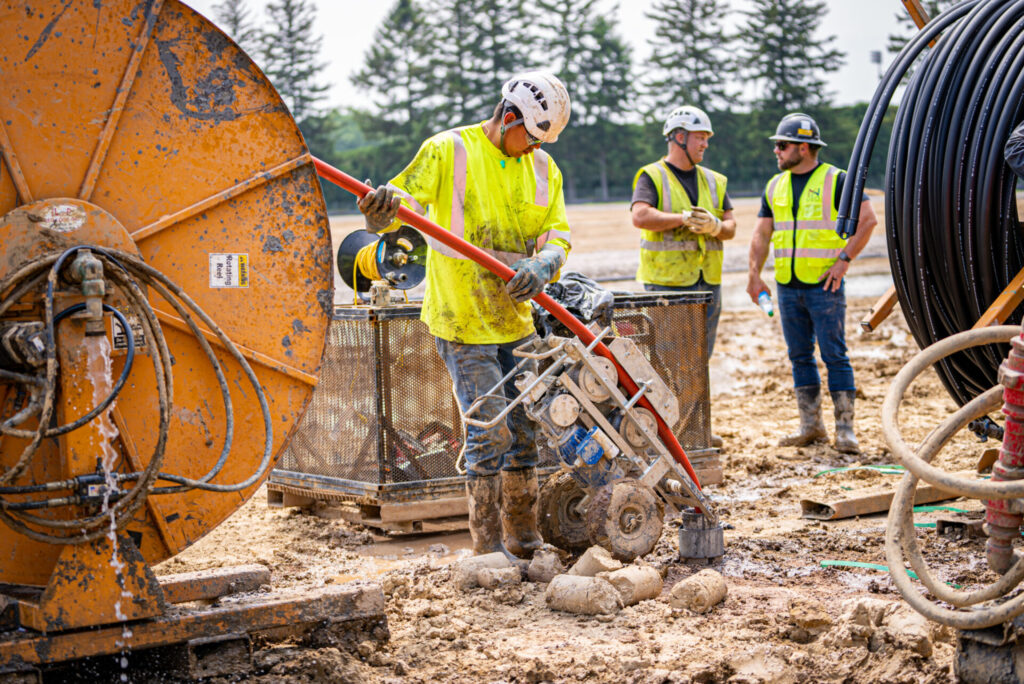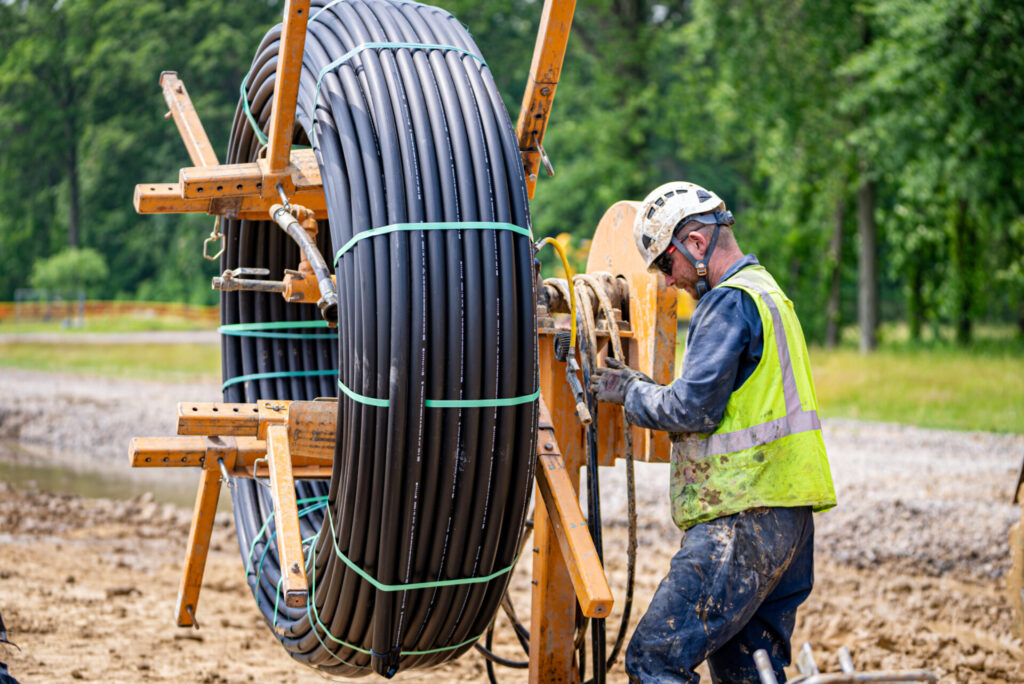Geothermal District Systems can provide an efficient, cost-effective, carbon-free approach to heating one or more buildings. Before investing in a detailed engineering design study, however, a high-level benefits and costs analysis can be performed to assess how a geothermal heat pump system might compare to alternatives. As there are many potential ways to modernize energy systems to achieve net-zero emissions goals and reduce costs, an up-front estimate regarding which decarbonization projects are the best options from environmental, economic, social, and financial perspectives can avoid a potentially costly path forward.
This article, the second in a series of two, focuses on how to assess alternative energy options for maintaining climate control in buildings. Read more in Power Grid International.
Installing Geothermal Systems
View the pictures below on how these systems are installed.



Find out more about Net Zero Transformation.







